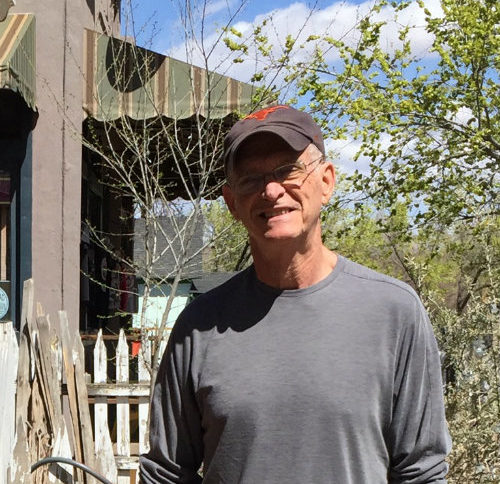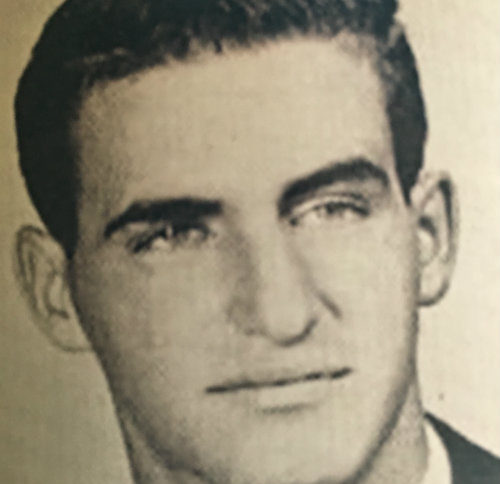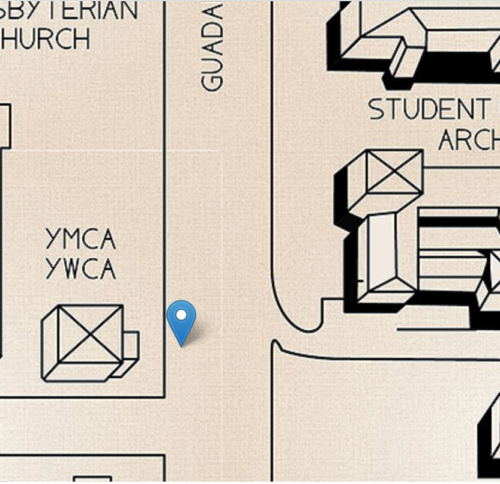“August 1, 1966: I woke up that morning thinking what the rest of the week held. I had a quiz coming up and needed a date for the weekend. I had a great job waiting tables at a girl’s dorm. I went there and helped serve breakfast.
After my shift, I drove to the frat house to park my car and walk to campus. My first class was a marketing class at noon. When I reached the drag, the street that borders the campus, I got an overwhelming feeling not to cross the street and attend my noon class. Instead, I felt I was being gently herded toward a coffee shop there on the drag – a place I had never been before. I entered the shop, took a table and, with a sense of peace, sat down. Two frat brothers came in and sat with me and we had a normal conversation.
A few minutes after noon, my life and the lives of countless others would be changed forever. I remember glancing up as a girl I vaguely knew came in the door with her face ghostly white. ‘Someone is shooting people,’ she screamed. Several of us rushed to the door. I looked up the sidewalk and saw a student who had been shot lying in front of the jewelry store. As I started out the door to help him, I heard the girl say, ‘I think the shooter is in the Tower.’ That bit of information changed how I would protect myself. Leaving the coffee shop, I ran out and crouched behind the cars parked beside the curb. I looked up the sidewalk and saw with relief people running for shelter into the stores. Soon the sidewalk would be deserted so there would be no one in my way from reaching the man who had been shot. I moved up the street still hiding behind cars. At some point I stopped and looked up at the sky.
Why was the sun still shinning, why were there still white, billowy clouds in the sky? It seemed that nature should somehow mirror the terrible events that were happening.
I finally came parallel with the student and it was time for me to move away from shelter. Crawling out to where he was, I gently turned him over onto his side. There’s no use going into great detail of his wound, but it was significant. Hugging the man to my body, I moved us to the front door where there were bullet holes – a photo of that door would later be the cover of Life Magazine.
The door pulled outward so I slowly backed us up. At that time, another student came from around the building and helped me move him inside. That other student then disappeared.
As I gently pulled the student into the store, I looked around to see where everyone was. Lined up against the back wall, stiff as statues were three to four people. One man said, ‘Could you pick him up, you’re getting blood on the carpeting?’
Soon an ambulance arrived with two EMTs (ambulance drivers). They came in and loaded the student on a gurney. Exiting the store, one EMT was wounded so we pulled everyone back in. The driver watched the Tower’s observation deck until the sniper passed out of sight and then we got everyone into the ambulance and sped off. He radioed that there was a major shooting on campus and would need all available ambulances. Then he started telling me how to help stabilize the student. Arriving at the hospital everyone was quickly off loaded and rushed inside. Another nurse very calmly said to me that all the victims would be coming to this hospital and would I help unload ambulances?
She slipped a lab coat on me and disappeared into the ER. That same nurse would later come out to tell me the student I tried to rescue didn’t make it. I barely acknowledged the news – numbness had, thankfully, set in.
Ambulances started arriving with wounded students. As they kept coming I remembered the smell of hot brake pads when they backed in. Finally, word came that the sniper had been killed. The nurse came out and collected the lab coat and I walked back to campus. As I crossed the campus I was struck by how quiet everyone was. The silence was seemingly born from numbness and incredible disbelief that a University of higher learning could be so violated.
We had led a sheltered life of schooling, frat parties and football games. Students who had their lives before them had been senselessly struck down.
I briefly stopped across the street from the jewelry store and watched as a crowd of people clustered around the front door and peering in the front windows.
The next day, I received a call from the student’s fiancée who also attended UT. She reached out to me and we later had a private meeting at her request. A couple of weeks later I received a letter from the slain student’s mother thanking me for trying to help. What kind of strength comes to a mother to write and say, ‘I’m so glad you were not injured in any way.’ My great regret in life is that I never wrote her back expressing my sorrow at her loss.”




